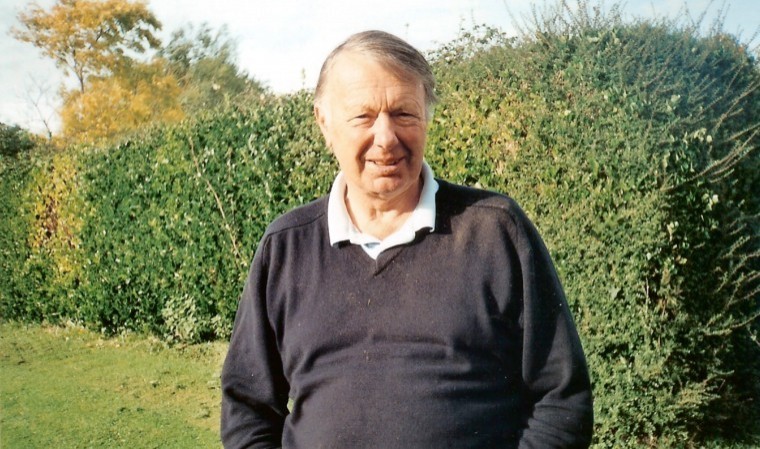Farmers are motivated by many different, often old fashioned things, such as working as our own master; taking responsibility for one’s own life and land; caring for tidy fields of crops or breeding and tending healthy livestock. Obviously there is, for some, the thought of making a fortune, for others simply trying to make enough money to survive. Some succeed, many don’t achieve either, becoming in the process wiser and, almost invariably, poorer.
My own ‘drivers’ were quite simple. From age six or seven there was only one ambition. To follow my ‘workaholic’ father, and many previous generations of the family, into farming, learn the basics and eventually follow him. For a year or two in my early teens I did hanker after being a police officer, like ‘Dixon of Dock Green’, but that quite soon wore off. So I followed the ‘Old Man’, learning the basics from him and by the time I turned 21 he trusted me enough to allow him to ‘ease off’ a little. Within a couple more years he took to golf and left me to make most day to day decisions. It could have been a disaster, but he was there in emergencies. Happily there were no major crises and, given my time again, I would probably do things much the same way. Perhaps my only real regret has been closing the herd. But I guess you have heard enough about that for the moment!
So now, when friends ask what I will do with myself, and the land, without the herd I tell them, ‘watch this space’. I have acquired some varied, interesting and scenically beautiful land over the past forty five years, ‘Boys Land’ up on the chalk, ‘Mans Land’ elsewhere. An interesting extreme of soils. The Home Farm, has been reduced in size by some 40% in recent years but, in the short term, continues to raise cattle, so it will stay ‘in hand’. There are several alternatives.
The Arun Valley farm is somewhat different. Owned earlier by a very good friend I knew it quite well beforehand, and it was purchased primarily to ensure enough feed for the dairy unit so its future is now under review. The land, mainly greensand, has been somewhat compromised over the past four years by shenanigans over a soil bund, constructed for us by a firm of excellent local contractors, designed to divert incoming floodwaters. Dogged by delays, firstly due to local planners then by some extremely questionable behaviour by the Environment Agency. However it is now resolved. The EA ‘saving face’ with a rather cosmetic solution. Moral? Never trust the integrity of the Environment Agency.
Nevertheless the flooding problem is now reduced, and plans are quite well advanced for the land’s future. It is mainly good free draining soil, grows almost anything with summer rains; It grew excellent crops of potatoes for a couple of years and may again; although with present unreliable rainfall trends it probably won’t make anyone a fortune growing cereals.
The Hill Farm, without its cows, but with fertility built up after over half a century as a dairy unit, has several options. Short term it is sheep and maize for a local AD plant, but maize needs reliable rainfall, from planting in May until late July. That’s a concern these days, although with June’s 3½ inches of rain this latest crop is generally back on target. Like the Home Farm, our family’s original dairy unit, it will probably remain ‘in hand’, the only thing missing will be cattle, at least until, or if, the government begin taking TB seriously. So ending the unforgivable way they have recently encouraged the spread of the disease across the home counties. While a small number of farmers have exacerbated the problem, responsibility is really ‘at the door’ of government’s crass, half-baked, short sighted movement rules, which make it too easy to introduce the disease. It’s simply a disaster.
In the meantime I continue to write these articles as an ‘ex dairy’ farmer. We will try to get north more regularly, to see the fast growing forest, planted back in 2011 on a 1200 acre ex dairy farm in Argyll where we have planted around a million trees, three-quarters of them Sitka Spruce, trees which, again benefitting from the fertility of ‘cattle past’, and the area’s seemingly constant Atlantic rains, have already grown to around 20-28ft since planting. Unfortunately we will not be around to see them reach maturity and harvest, but it is quite rewarding to have diversified in this manner and feel we have, perhaps, done something, small yet quite positive, towards the long term wellbeing of the planet.
These changes may also give me more time to ‘lean on the odd gate and just look at things’, without the rush of times past, and enjoy our wonderful birds, creatures which have given so much pleasure my whole life. Trying to protect them, against all sorts of predators, from air, land, even human, and those recent ignorant shooting restrictions; to see the swallows, martins and occasional swifts arrive in springtime, listening for the now rare cuckoo, barn owls, mistlethrush, turtle doves, and linnets among others. Also bringing back memories of corncrakes in the early Fifties.
Just having time to do what I want, rather than what ‘the seasons say needs doing’. That will be a real treat. But it will not mean retirement.
Emma meanwhile remains, diversified yet involved, Wally my stockman also stays busy, as he takes his last sixty or so calves through their first year.
Yes, it will be very different, but we won’t stand still, while looking forward to new opportunities and new challenges, because that’s what keeps the job interesting, and gives this farmer the required motivation.




